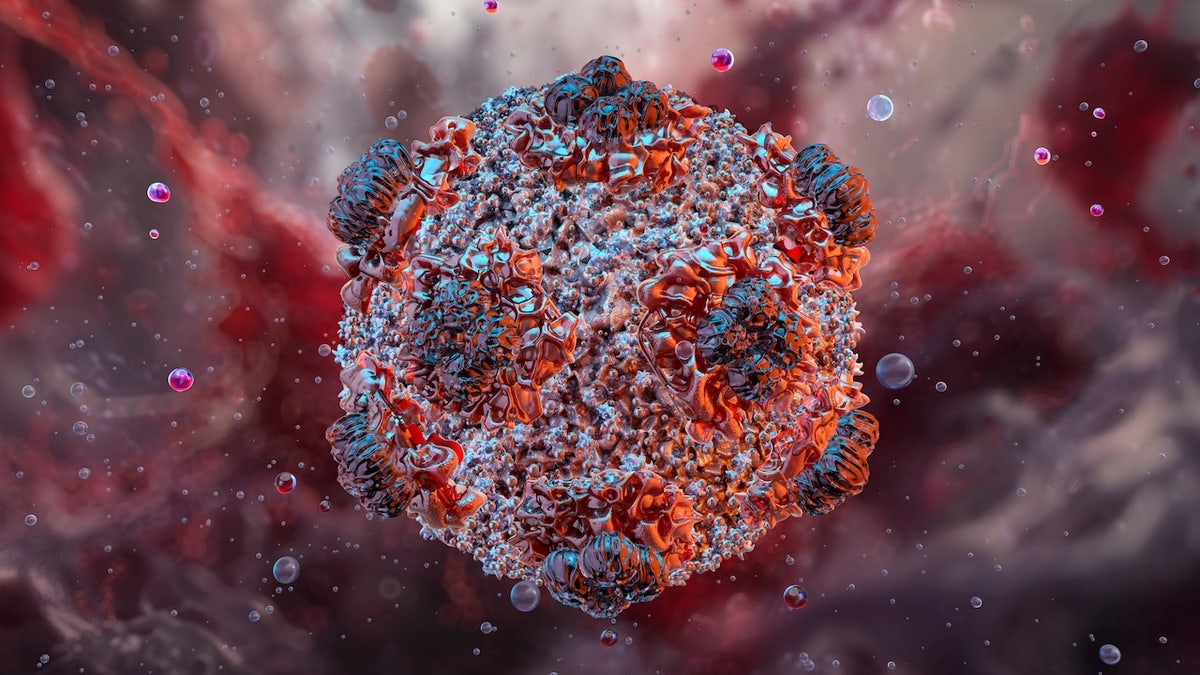Three die in California by Hantavirus, the cause of the death of Gene Hackman’s wife

Hantavirus, the disease that caused Betsy Arakawa’s death, the wife of the actor Gene Hackman, caused the life of three people in California.
After Arakawa, 65, was found dead together with Hackman, 95, on February 26, the authorities confirmed his cause of death as “HantaVirus lung syndrome” (HPS), while Hackman gave up to atherosclerotic cardiovascular disease together with an advanced cardiovascular disease together with an advanced cardiovascular disease advanced together with an advanced cardiovascular disease Together with an advanced cardiovascular disease advanced together with advanced cardiovascular disease advanced together with advanced advanced cardiovascular disease together with advanced advanced cardiovascular disease together with advanced advanced cardiovascular disease together with advanced advanced cardiovascular disease together with advanced cardiovascular disease advanced together with an advanced cardiovascular disease. advanced together with advanced advanced together with an advanced cardiovascular disease with advanced advanced cardiovascular disease together with advanced Alzheimer’s disease.
Now, the public health of the County of Mono has confirmed a total of three deaths due to Hantavirus in the Mammoth Lakes, a city in the mountains of the Sierra Nevada in California.
After the death of Val Kilmer’s pneumonia, what to know about the respiratory virus
Hantavirus include a group of viruses Mainly brought by rodents that can cause serious respiratory or kidney diseases in humans, according to dr. Rhys Parry, a molecular virologist of the University of Queensland in Australia.

After Betsy Arakawa, 65 years old, was found dead together with her husband Gene Hackman, 95 years old, on February 26, the authorities confirmed her cause of death as HantaVirus lung syndrome. (Ron Galella/Ron Galella collection via Getty Images)
Most of the Hantavirus found in the North, in the center and in South America can cause HPS. The disease has a mortality rate of almost 40% in those who are infected.
All three recent cases of California have been fatal, that dr. Tom Boo, head of the public health of the County of Mono has described as “tragic and alarming”.
“We don’t have a clear sense of where this young adult may have contracted the virus,” Boo said in a press release.
“An increase in internal mice increases the risk of exposure to Antavirus.”
A person had “numerous mice” in their home, but no proof of mice was found in the other two houses, said the press release.
“The occurrence of three cases in a short period worried me, especially at the beginning of the year,” said Boo.
“We observed some mice in the workplace, which are not unusual for the internal spaces at this time of year in the Mammut lakes,” he continued. “We have not identified other activities in the weeks preceding the disease that would have increased the exposure of this person to mice or their excrements”.

The most common type of rodent to transport it to the United States is the mouse of deer. “Many of us meet deer mice in our daily life and there is some risk. We should pay attention to the presence of mice and pay attention to their waste,” a health official recommended. (Istock)
The cases of Hantavirus are generally seen in the late spring and summer area, said the public health official.
Seeing three cases at the beginning of the year is “surprisingly unusual”.
“We believe that the numbers of Topo dei Cervi are high this year in Mammoth (and probably elsewhere in the Eastern Sierra)”, wrote Boo. “An increase in internal mice increases the risk of exposure to Antavirus. Therefore, it is essential to take precautions.”
The measles outbreak continues: see which states have reported cases
None of the infected people engaged in activities that would have exposed them to the virus, such as cleaning poorly ventilated internal areas or annexes with many mouse waste, the official went on.
“On the other hand, these people may have been exhibited during normal daily activities, at home or in the workplace,” he said.
“Many of us meet deer mice in our daily life and there is some risk. We should pay attention to the presence of mice and pay attention to their waste.”
How Hantavirus spreads
“Hantavirus generally spread when humans breathe urine viruses from disturbed rodents, excrement or nesting materials,” Parry previously said to Fox News Digital.
The Hantavirus found in the United States are not known to spread among people, according to the CDC.
The patient dies from anger after organ transplantation from the infected donor
Other diffusion mechanisms, according to the CDC, include breathing in the contaminated air during cleaning after rodents, touching the contaminated objects and then touching the nose or mouth, be bite or scratched by an infected rodent and eat food contaminated with the virus.
Dr. Marc Siegel, clinical professor of Medicine at the Nyu Langone Health and Fox News Senior Medical Analyst, has agreed that Hantavirus can spread through dust from the rodents’ saliva, in the urine and in the places that touch.
IMAGE
The most common Type of rodent To transport it to the United States is the deer mouse, the doctor confirmed.
Most cases of Hantavirus are observed in rural areas, where rodents are more likely to enter houses or barns, observed the CDC.
Siegel added that rarely affects humans “because only some rodents have it, and they do not all come into contact, but from a third in half of the cases they are fatal”.
Symptoms and treatment
The first symptoms of Hantavirus include fever, muscle pain, fatigue and Gastrointestinal problems who appear everywhere from one to eight weeks after the exhibition, according to Parry.
“These progress for serious respiratory symptoms such as cough, lack of breath and fluid in the lungs from four to 10 days later,” he said.

Hantavirus is a virus of the AR which can be transmitted to humans through excrements of rodents, causing serious diseases. (Istock)
The Sin Nombre virus is the most common HantaVirus in the United States, which causes Hantavirus lung syndrome with a mortality rate of about 38%.
“In general it becomes fatal when the lungs fill with fluid, bringing to respiratory failure And insufficient oxygen that reaches the vital organs, “Parry observed.
Click here to get the Fox News App
There is no specific antiviral treatment for Hantavirus, the expert said, although early intensive care with oxygen therapy e Support measures It is crucial.
“Early intensive medical treatments are fundamental because patients who have a sudden acute disease can quickly become seriously ill and die,” says the CDC.

The first symptoms of Hantavirus include fever, muscle pain, fatigue and gastrointestinal problems that appear one from eight weeks after exposure. (Istock)
“If a patient is experiencing full anguish, it is less likely that the treatment is effective.”
Support care can include monitoring Cardiac functionadministering fluids and oxygen and positioning the patient on a fan in need. Patients may also receive broad spectrum antibiotic therapy, fever and pain -relieving reducers.
“Early intensive medical treatments are fundamental, because patients who have a sudden acute disease can quickly become seriously ill and die”.
“Although there is no cure for Hantavirus lung syndrome, it is important to search for medical care when short-breathing, because the patient may need support from a mechanical fan or by a machine for extra-correral membrane oxygenator and ECMO treatments) to provide enough oxygen to their body”, dr. Sonja Bartolome, an expert in polymonology and critical care in the south-west of the medical center south-nine.
Click here to subscribe to our health newsletter
“Even with medical care, from 30% to 40% of people who develop Hantavirus lung syndrome will not survive.”
HantaVirus prevention
To prevent the spread of the virus, the public health of the County of Mono has recommended to seal gaps at home to prevent mice from entering and retaining food in rodent -proof containers.

Health officials have recommended to aspire or sweep exclusions of rodents, nests or urine, as this can arouse the virus in the air. (Istock)
They also recommended to aspire or sweep exclusions of rodents, nests or urine, as this can arouse the virus in the air.
Any contaminated areas must be sprayed with a disinfectant or a 10% just made bleach solution, which they recommend and any closed areas must be transmitted for at least 30 minutes before the activities.
For other health articles, visit www.foxnews.com/health
People should wear gloves and a N-95 mask during cleaning the contaminated areas.
“Do not eat food that may have been contaminated by rodents and always wash your hands thoroughly after any potential exposure,” added the health officials.




